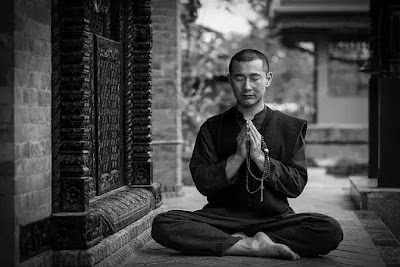Introduction to Yoga practice: What is Yoga? Why we should practice it?
According to Indian psychology, it is the unification of Atma with Parmatma. In other words, a union of our consciousness with the super-consciousness. It provides the discipline of the mind as well.
The modern age is indeed full of stress, depression, and anxiety. Symptoms of the modernized age people are due to an unhealthy as well as a miserable lifestyle.
Therefore, the introduction to yoga practice proves to be significant for people in various ways – Physically, mentally, and emotionally.
 |
HISTORY OF YOGA
Yoga is the leading way through the culture and heritage of India. The origin of yoga practice introduction is as old as human civilization.
According to some studies, introduction to yoga practice has been since 5,000 years ago in India. At first, yoga practice was like a myth for anybody but the witness. However, the earliest excavation of known Indus valley civilization proved yoga practices since 5,000 years back.
Many soapstone seals found engraved resemble yoga postures, which indicated that they knew everything about yoga introduction and even practiced it.
In India, the earliest scripts were Vedas, which are – Rig Veda, Yajur Veda, Sama Veda, and Atharv Veda. Each Vedas were found to have several descriptions of yoga practice in it.
Yoga training increases the boundaries and limitations of the mind. Regular practice of yoga not only relaxes the mind but can improve your brain functioning.
It improves the efficiency of the mind and encourages faster and accurate works. Hence, the Vedic period yoga practice introduction was also ritual for the people at that time.
That is why several holy scripts in India describe yoga practice as an essential part of life. However, there is a detailed yoga practice introduction in Upanishads, Gita, Mahabharta, and Ramayana.
Moreover, Yoga activity has high significance to Hindu and Buddhist since Lord Buddha taught about yoga and the importance of meditation.
Then, the yoga sutra, written by Patanjali, belonged to the 2nd century. Yoga sutra implies – a thread of memory – in which he mentioned the knowledge and wisdom he gained about yoga throughout his life.
 |
He wrote about 8 elements of yoga that are:
1) Yama
2) Niyama
3) Asanas
4) Pratyahara
5) Pranayama
6) Dharna
7) Dhyana
8) Samadhi
ELEMENTS OF YOGA – INTRODUCTION TO YOGA PRACTICE
As Patanjali described in the yoga sutra, there are eight fold-paths to attain yoga. The practice of every element is quite beneficial for our body, mind, and soul.
To attain the state of a yogi, follow the whole components one after the other.
Once you gain efficiency in one element, you can proceed to another.
1. Yama
Yama is the first element among the elements of ashtanga yoga. Practicing Yama removes the senses from worldly materials that distract the mind and make it struggle for peace.
According to maharishi Patanjali, there are five kinds of Yama – Ahimsa, Satya, Asteya, Brahmacharya, and Aparigraha.
- Ahimsa (Non-violence) – Yoga does not support causing harm to any organism or living being. Any negative thought, whether it is hate, anger, jealousy, anxiety, injects violence. We should be free from such emotions since they can easily possess a person and lead in the wrong direction. Thus, instead of negative emotions, focus on the positive values of others to encourage better performance.
- Satya (Truthfulness) – Satya is the imperative frame of Yama. We should be true to ownself. One should not be fake. Instead, they should behave what and who they are. We should be truthful in our thought, words, and deeds.
- Asteya (Non-stealing) – The propensity to use objects, money, or thought possessed by others for our benefit is also stealing. Whereas, Asteya promotes the feeling of being satisfied with what we earn, what we have.
- Brahmacharya – Brahmacharya implies staying away from pornographic literature and food supplements that promote sexual desire. Therefore, be Brahmachrya by thoughts and stay away from such distractions.
- Aparigraha – Aparigraha means living a life with minimum requirements. According to aparigraha, one should attain a state of mind that causes us to have only as many resources as we require. We should not run after worldly objects, which don’t even belong to us or are not needed.
 |
2. Niyama
Niyama also comprises of ethical ideology as Yama. Niyama is related to the body and senses. There are five niyama that are
- Swaccha – Swaccha refers to purity. There must be physical as well as mental cleanliness. Every day we clean ourselves externally by bathing. Similarly, there should be internal purity too. Internal hygiene would keep you away from several diseases. We have several ways to ensure internal cleanliness, which are collectively called Shatkarmas. Shatkarmas are six kriyas in yoga named Neti, Dhoti, Nauli, Basti, Kapalbhati, and Tratak.
- Santosh – Santosh implies satisfaction. It is required to be happy in life. One should be free from greedy desires and contented with what he/she has. There should not be a feeling of anger, sorrow, jealousy, etc.
- Tap – The word tap resembles the state of the dedication that is maintained to achieve a target. It indicates mastering the obstacles and difficulties and continue efforts to achieve your desired goal. Further, this section of yoga supports the idea of not losing hope in difficult situations and should remain consistent towards achievement.
- Swadhyaya – It is the path of awareness and knowledge. Swadhyaya includes self-awareness and understanding of devotional holy scripts. Since it is equally important to know what we are doing, what is the reason behind it. Several problems are reasonable through the matter given in Vedas, Granthas, Upnishads, Yogdarshan, and Gita. Thus, it is helpful to study these piety scripts to accomplish knowledge of life.
- Ishwara Pranidhan – Dedicating all our deeds to god is known as Ishwara Pranidhan. People being a true devotee believe that whatever he/she has achieved in life is due to god’s grace. For god, facilities and prosperity like mind, youth, intelligence, power, position are mere his creativity. Consequently, rehearsing yoga elements release us from ego, vanity, and other emotional impurities.
3. Asana
Asana suggests a position or posture of the body. The yoga postures are the most practiced yoga component, often mistaken as yoga, which itself (asana) is a component.
Therefore, practicing asanas take you a step towards yoga. Yoga asanas practice benefit the body, improving flexibility, agility, and maintenance of juvenility.
Depending on different conclusions and influences on body parts, asanas split into various categories, like meditative asanas, relaxing asanas, or corrective asanas.
Besides, yoga poses are beneficial for every age of people whether is young or old.
4. Pranayama
Pranayama includes controlled breathing that causes relaxation and improves blood circulation. It helps us to control our inhalation and exhalation process.
Further, the three main components are – Puraka means inhalation, Kumbhaka means retaining the breath, Rechaka means exhalation.
Also, there are different types of pranayamas based on their effects. Some are Ujjayi, Suryabhedi, Sheetkari, Bhastrika, Bhramari, Murcha, and Plavini.
It improves breath volumes and increases heart rate. Moreover, asanas strengthen the lungs and provide cardiovascular health, which results in longevity of life.
 |
5. Pratyahara
It is considered quite beneficial to gain control over our senses as it helps reducing distraction. Thus, Pratyahara, another component of yoga, is a process of achieving control over our insights through practice.
This yoga element focuses our senses rather than indulging them in external objects and thus leads to succession. It is quite helpful in case you want to focus your mind and energy on self-ascension.
In simple words, we should focus on our goals and achieve them with continuous efforts than being diffracted by materialistic hindrance. Sometimes, attachment to several senses averts a person from chasing its purpose.
Those who learned pratyahara and also practice it daily have ease with their achievements.
6. Dharana
Dharana, similar to pratyahara, refers to the concentration of mind. Often you might have found that while trying to focus, our mind generates innumerous thoughts.
To confine this scattering of mind is Dharana. When we focus our mind on a particular point, our mind is assumed concentrated.
The point of convergence could vary with the part you want to heal or to improve. Dharana is considered the first step of Dhyana and Samadhi.
 |
7. Dhyana
This yoga component reflects the idea of consistency in mind. For instance, during our daily tasks, unknowingly, we deeply indulge in it that we forget to keep track of surrounding.
Dhyana yoga means a complete concentration of mind while performing any task without any divergence for a long time. It is also considered the earlier stage of Samadhi and the later stage of Dharana.
8. Samadhi
Samadhi is considered the union of the individual soul with the supreme soul. Moreover, it is checking all pulses of the mind.
A yogi who has attained the stage of oneness with the supreme is said to have Samadhi.
When the difference between individual self and divine disappears, and one begins to understand the god, those people are said to have Samadhi.
BENEFITS OF YOGA PRACTICE
Along with physical and mental stability, yoga improves health, heals aches, and keeps diseases at bay. Practicing yoga provides you flexibility and improves correct posture.
Many who have practiced it were astonished by its benefits. Once you practice yoga regularly, you probably feel disease-free and enhanced immune system.
 |
Yoga can prevent disease and help you recover from past illnesses. Here are some astonishing benefits of yoga that helps you live a healthy and happy life:
1) Corrects your posture
Practicing Yoga is the best way to correct your posture. It may help relieve unnecessary strain produced due to an improper lifestyle.
Improper postures are a result of inappropriate sitting, walking, or lifting weight. Yoga fixes your incorrect postures and relaxes the body from the strain.
Also, these activities relieve the pain that occurs due to disjoint and wrong posture. Poor posture can cause extreme pain in the neck, shoulder, ankle, back, etc.
Practicing yoga not only corrects your posture but also makes you look good and consequently increases the efficiency of performing other tasks as well.
2) Yoga decreases stress
This yoga practice introduction helps you relieve stress and promote relaxation.
According to a study on women performing yoga reduces the secretion of the stress hormone named cortisol.
Yoga includes meditation as the most effective stress-releasing activity that also pleases your mind.
Besides, experiments on thousands of people concluded yoga does not just remove stress. Also, it improves the quality of life, for instance, through discipline, hygiene, and self-awareness.
 |
3) Removes Anxiety
Stress is a day-to-day problem of ordinary people. Yoga serves as a way to remove stress and induces creativity and productivity.
Anxiety is a result of unnecessary distractions due to past acts or maybe future destinations. Yoga teaches you to live in the present moment that results remove stress, depression, and anxiety.
It draws your mind to a state of peace in mind, which eliminates unnecessary thoughts. A research study held on a group of women indicated that women who practiced yoga classes were likely to have the least anxiety and resulted in a better lifestyle than those who didn’t.
Another study included women with post-traumatic stress disorder (PTSD), which had severe anxiety and fear, including exposure to a traumatic event.
Some were treated with the help of yoga, while others were not. Consequently, it explained that yoga being a relaxing medium helped most PTSD suffering women and resulted in less or no further traumatic symptoms.
5) Build strong muscles
Strengthen and increased muscle mass boosts the rate of fat burning and develops good looks.
Body muscles prevent injury in the bones during any fall. It works as a building strength along with flexibility.
Building muscles also prevents back pain, arthritis, etc. In the gym, while strength training, it is obvious to have an injury if we neglect proper warm-up.
Warm-up introduces flexibility that prevents tearing of muscles or ligaments.
Therefore, yoga is the best practice before strength training to build strength as it improves one’s flexibility.
Each asana takes your joints through an increased range of movement. These kinds of practices prevent inflammation in joints, ligaments.
The joint cartilage is a sponge-like structure that requires nutrients regularly better provides strength to joints.
Performing yoga helps regulate the cartilage to squeeze and soak its by-products and nutrients, respectively.
 |
When we contract and stretch muscles while doing yoga, our lymph secretions, essential in immune cells, increases.
It promotes the disposal of toxic by-products, which also destroys harmful cells and fight infection.
5) Strengthens Bones
Moreover, weight lifting exercises strengthen your bones and also serve against osteoporosis.
Several yoga asanas and poses make you lift your weight that causes the strengthening of bone muscles.
Besides, it is required to have an adequate amount of calcium in your diet to control osteoporosis fractures.
Additionally, yoga helps with different weight-bearing exercises that strengthen bones and improves their density as well. Yoga’s ability to reduce stress levels may also help conserve calcium in the bones.
One of the general bone problems includes pain in the spinal disk that serves as shock absorbers and regulates several hormones circulation.
It provides essential nutrients and protection to vertebrae. Well, balanced yogic asanas can help them (spinal cord) develop strength, which is fruitful for bones and the brain.
Therefore, yoga postures regulate several signals throughout the body. Thus, it helps in circulation and ensures the proper connection of nerves all over the body.
6) Improves blood flow
Yoga improves blood flow in the body. While performing some relaxing asanas, we get proper blood flow to every body part.
It improves blood flow in the body so, the cells get access to oxygen and increase efficiency to work.
Also, those who have a problem with swelling in their legs could benefit from yoga. It is better to perform yoga asanas regularly as it reduces much of its swelling.
Yoga also improves the amount and strength of hemoglobin and red blood cells that promote oxygen circulation through every cell and tissue.
Performing activities like yoga also maintain blood thickness, which means it neither remains much thick nor become much thinner.
 |
There should be a good range of platelets and blood clotting proteins (white blood cells) in the blood to prevents the risk of heart attacks and strokes.
Nowadays, several unhealthy eating habits and lifestyles are also responsible for these problems. However, yoga being an energetic exercise can reduce its effect and promotes healthy maintenance of the body.
7) Increases heart rate
Regular yogic activities make our heart pump faster, like through cardio exercise, you tend to decrease the risk of a heart attack.
Yoga, however, is categorized in many forms, where some are relaxing, others are intense. One that boosts your heart rate belongs to some strenuous exercises taught in Ashtanga yoga, for instance, Surya-namaskar.
Moreover, every yoga practice is capable of improving the cardiovascular health of a person. It also raises your breath volume results in greater oxygen intake, which reflectively promotes one’s health.
Even pranayama, which includes breathing practices, is found helpful in improving cardiovascular health.
According to a study, those who followed pranayama have improved breathing skills. Plus, this practice results in increased efficiency in performing such tasks.
Additionally, one study on people suffering from hypertension had a mind-blowing decrease in blood pressure when made to perform cobra-pose or Shavasana regularly.
It was beneficial for hypertension as it relaxes our body, mind and promotes cardio fitness.
Such practices lower blood pressure, blood sugar, LDL cholesterol (bad cholesterol), and promotes HDL (good cholesterol).
By regulating several hormone secretions, proves to be healing our insulin sensitivity and ensures a healthy weight range required for an individual.
Practicing Yoga impressively gets your blood sugar level down and reduces the risk of heart attack, kidney failure, and blindness.
8) Improves Flexibility
Being stretching exercise yoga introduces flexibility to the body. A daily yoga practice eventually increases the range of movements of your joint as they become quite flexible.
 |
It also eliminates corresponding pain in joints or muscles. Lack of flexibility leads to improper muscle development and results in a poor posture that eventually causes pain in several parts of the body.
Therefore, we should practice yoga to ensure better posture and healthy joints. While performing simple tasks, we unknowingly produce strain in our muscles, ligaments, joints, and increases stress and fatigue.
Yoga helps us remove strain from the affected part like neck, shoulders, hamstring, feet, spine, etc.
Strain for much larger periods results in distressed mood and inadequate posture, responsible for unnecessary pain.
9) Improves emotional health
While practicing yoga, several emotional impurities quell. Yoga slows down the frustration, regret, anger, fear, and desire effective for stress, tension, anxiety.
Since some diseases like high blood pressure, heart attack, migraines, insomnia implicate stress. If you can learn to quiet your mind, you can achieve your target.
We improve our imagination power through contemplating images in our mind while performing Yoga-Nidra. Besides, it can cure migraine problems as it improves the pulse of the mind.
The activity makes us aware of our emotions and body science, which helps us decide what is useful for us or how to achieve peace and happiness. Several meditative yoga practices speed up your mind and its decision process.
Further, it can help you keep calm in unfavorable conditions and conquer the situation with ease as it improves decision-making.
 |
10) Keep diseases at bay
Kriyas and cleaning practices we learn through yoga are helpful in the prevention of diseases. They include everything from breathing skills to internal cleansing.
Jal Neti is performed in accordance to get rid of mucus and virus from the nasal cavity. Thus, many such practices help keep you protected from several contamination or diseases.
It also encourages the idea of self-care. Since more you become committed to yoga practices, the more you develop a clean and positive environment that prevents you from aging, sickness.
Sometimes providing a cheerful hope that we will get better is way more helpful than a real ailment. The study of yoga not just increases the positivity but also provides strength to overcome health conditions and become better.
Therefore, since school time, we practice the prayers of self-empowerment to encourage and achieve our good intentions, which holds the teachings of yoga.
Enchanting positive words are powerful and efficient on our health, whether emotional, mental, or physical.
 |
11) Improves self-esteem
Many young age children suffer low self-esteem. Lack of management and direction can divert them to negative paths like overeating, disorders, unhealthy lifestyles, etc. that may further ruin their behavior.
Introduction to yoga practice provides a discipline to conquer flaws and promotes focus on your strength. Remember, the self-awareness property of yoga improves self-image and consequently self-esteem.
Regular yoga practice introduces a different self-side filled with values like discipline, hard work, consistency, etc.
Therefore, the introduction to yoga practice is a pack of several ethical and physical practices, quite helpful in leading a healthy and happy life. You can achieve your desired target through continuous efforts.
